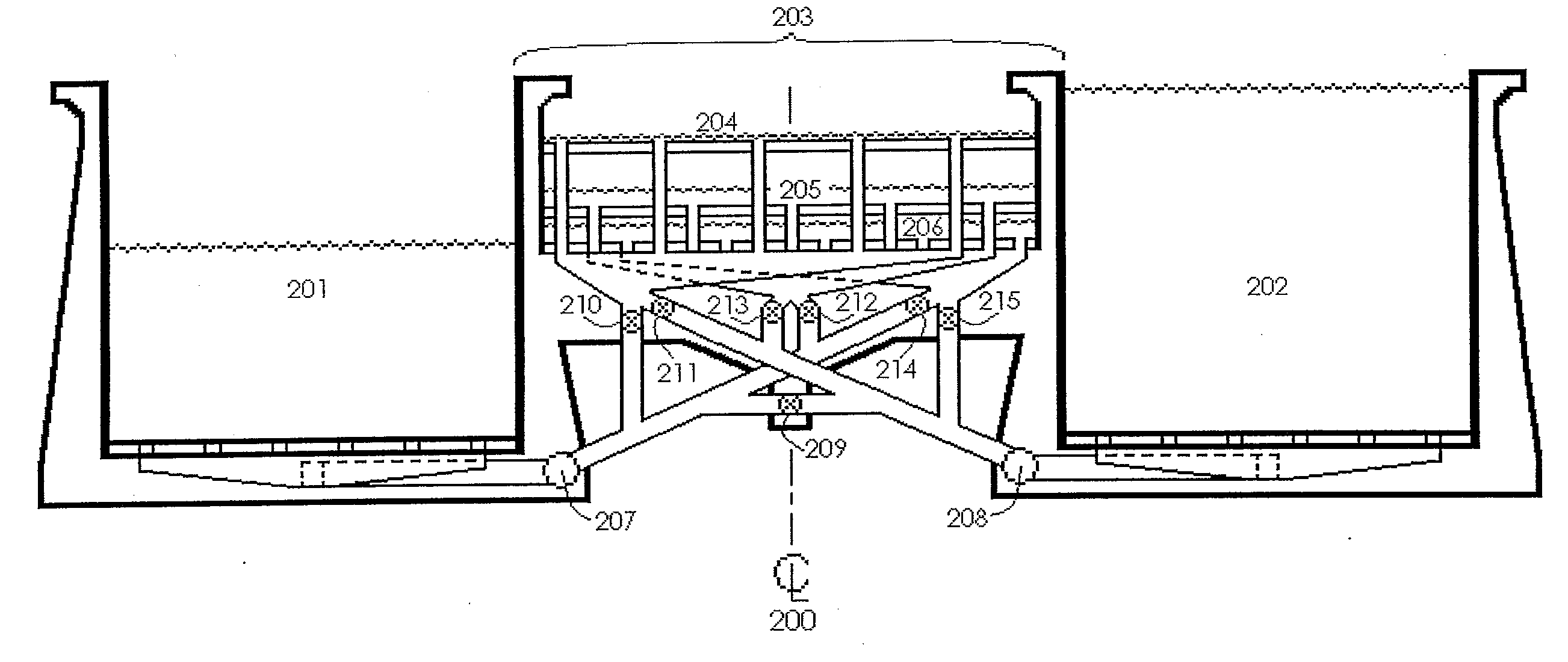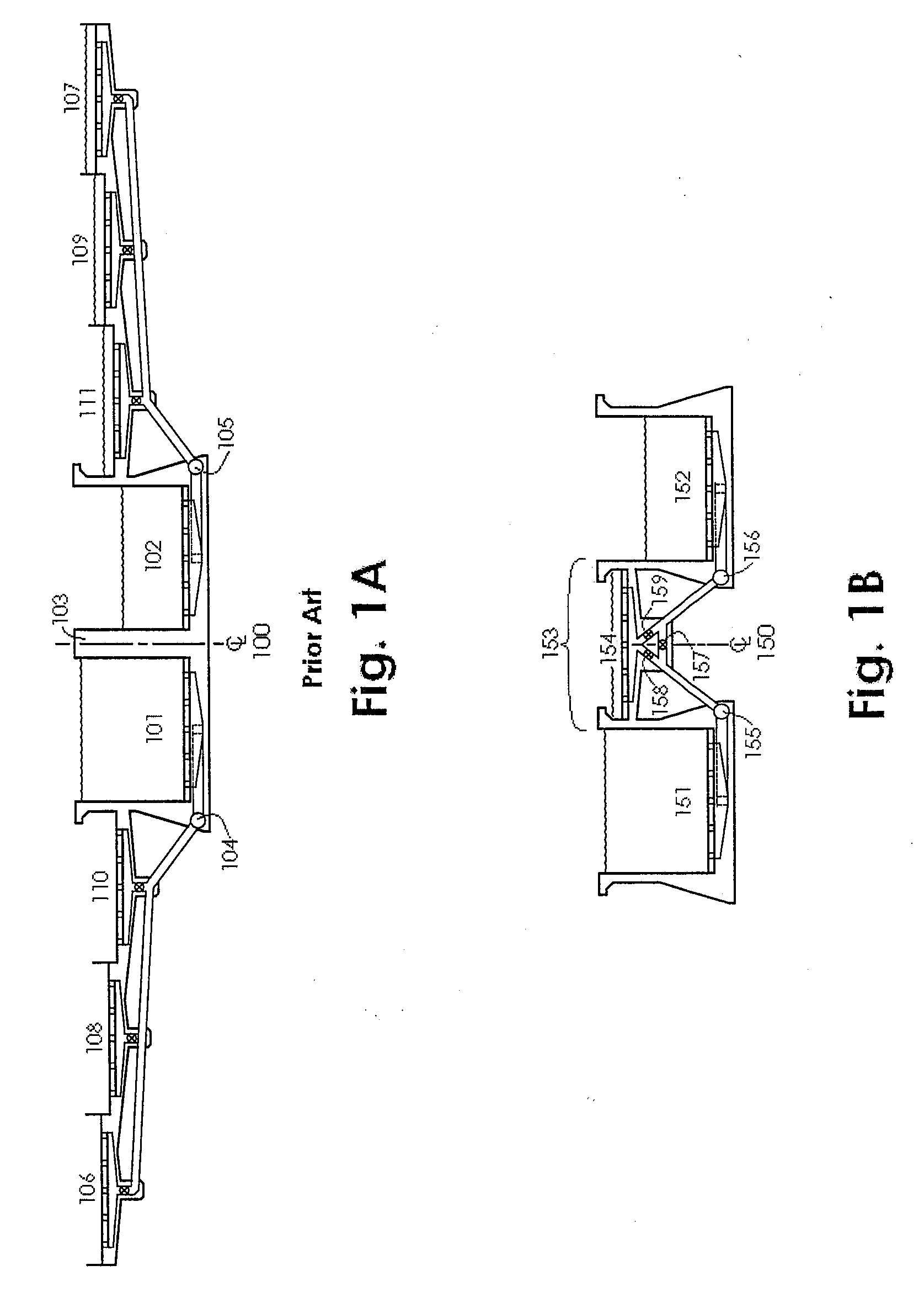Water-saving lock configurations and operations
a technology of water-saving locks and configurations, applied in water installations, dry docks, construction, etc., can solve the problems of high cost, affecting shippers' shipping, and unused seagoing, so as to reduce salt intrusion volumes, reduce salt amount, and effectively counteract
- Summary
- Abstract
- Description
- Claims
- Application Information
AI Technical Summary
Benefits of technology
Problems solved by technology
Method used
Image
Examples
Embodiment Construction
[0042]For the purpose of promoting an understanding of the principles of the inventions, reference will now be made to the embodiments illustrated in the drawings and specific language will be used to describe the same. It will nevertheless be understood that no limitation of the scope of the inventions is thereby intended, including such alterations and further modifications to the illustrated devices, and such further applications of the principles of the inventions as illustrated therein being contemplated, as would normally occur to one skilled in the art to which the inventions relate.
[0043]The devices, system arrangements, and operating methods described herein allow the water volume used by a hydraulic ship lift, commonly referred to as a lock, to be reduced in ways that differ with respect to how previously available lock designs were operated and in what could previously be done using system arrangements and operating methods applicable to the lock designs then available.
[0...
PUM
 Login to View More
Login to View More Abstract
Description
Claims
Application Information
 Login to View More
Login to View More - R&D
- Intellectual Property
- Life Sciences
- Materials
- Tech Scout
- Unparalleled Data Quality
- Higher Quality Content
- 60% Fewer Hallucinations
Browse by: Latest US Patents, China's latest patents, Technical Efficacy Thesaurus, Application Domain, Technology Topic, Popular Technical Reports.
© 2025 PatSnap. All rights reserved.Legal|Privacy policy|Modern Slavery Act Transparency Statement|Sitemap|About US| Contact US: help@patsnap.com



